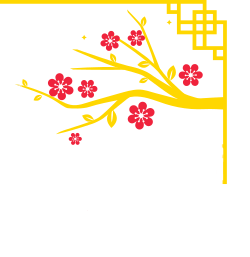If you are just at the begining of your Chinese learning journey, say for instance you know you want to learn Chinese but you are not too sure where to start or the best way to commence, then read on. There are some decisions you need to make and important underlying prinicples you need to understand.
The first decision to make is to be clear on what exactly you want to learn. It is important to get this decided early on because it might make it tricky to back track later if you change your mind and decide you also want to learn to read and write Chinese, not just speak it.
With this in mind here are some important building blocks to understand before you decide.
Mandarin is the most common version of spoken Chinese and also the official language of mainland China. It is spoken in Singapore, Chinese Taiwan, Malaysia and other South East Asian countries too.
Today it is probably the most widely spoken of the different Chinese language variations. If you intend to learn Chinese for business or employment, Mandarin is definitely the option to choose.
Mandarin is the version of Chinese we focus on here at Jiāotán.
Learn MorePinyin is a standardised way to write or type Chinese words using the Latin alphabet. Unless you have a Chinese keyboard (either physical or virtual) you will need to know Pinyin (or another phonetic input method) in order to type Chinese characters.
On its own Pinyin is not really used for reading or writing Chinese but it is used as an intermediate step to typing Chinese characters. Even if you don't plan on learning to read and write Chinese characters, Pinyin can still be useful for learning to use word lists for your vocabularly, rather than listening to someone speak. Most Mandarin self learning material aimed at foreigners will use Pinyin as a way to learn Chinese characters and pronounciation.
When starting out, Pinyin is helpful for understanding the pronunciation of a Chinese word without first hearing it spoken. It also incorporates tone marks, placed above letters, which indicate how to pronounce a sound using one of the 4 main tones found in Mandarin.
Learn MoreHanzi are the typical Chinese characters you may be used to seeing. There are different sets of characters in use but the one we are learning here is known as Simplified Chinese.
Simplified Chinese is used throughout mainland China, Malaysia and Singapore.
A different set known as Traditional Chinese is used in other areas of South East Asia such as Hong Kong and Chinese Taiwan.
Chinese characters can also be found in Japanese writing and these characters are known as Kanji in Japanese.
交谈
Hanzi for chat (Jiāotán)
In Mandarin Chinese there are 4 main tones that are important to learn. The tone changes the way you pronounce a sound (or sylable). In Pinyin the tones are represented by placing tone marks above a letter. These are also known as diacritics or accents. They look like this:
ā - First tone (flat or level) uses macron
á - Second tone (rising) uses acute accent
ǎ - Third tone (falling-rising) uses caron
à - Fourth tone (falling) uses grave accent
Note it is not 100% necessary to always type the accents on Pinyin letters if you are just learning to read and write in Chinese characters. If you do want to type correct Pinyin with tone marks then check out my setup page in the Toolkit section to find out how to set up your computer or device for correctly typing Pinyin and Hanzi.
Learn MoreSo the decision for you really comes down to the following options, in order of difficulty and effort required:
Only learn to talk and understand spoken Chinese
Learn to Speak and also read and write Pinyin
Learn to Speak, read and write Pinyin and Hanzi characters
For me I have chosen option 3. You can learn more about My Approach here, but in short I decided Pinyin was important to learn so I could expand my vocabulary. Once I decided on that, it seemed like really only an incremental effort to learn the Hanzi characters on top of all the Pinyin words I would be learning.
You should be aware that there is a school of thought within the TPRS methodology that it is much easier for students to first focus solely on speaking a target language. Later it should be easier to pick up reading and writing once you reach a certain spoken proficiency. Certainly learning to read and write Chinese chracters is going to add to the work effort required. I have some links and more info about language learning methods here.
And remember, I'm not an expert. I'm just explaining to you how I decided on the path and method that works for me. Your mileage may vary!

